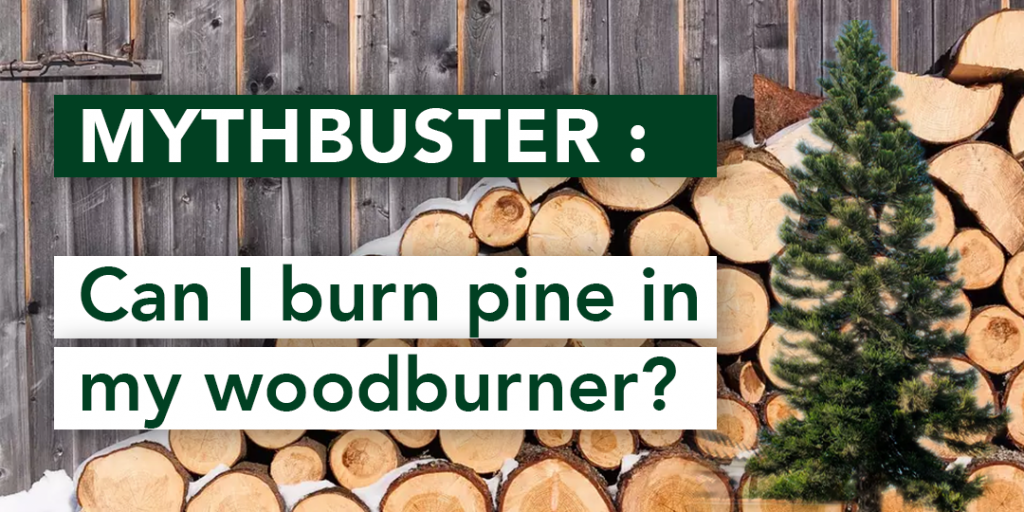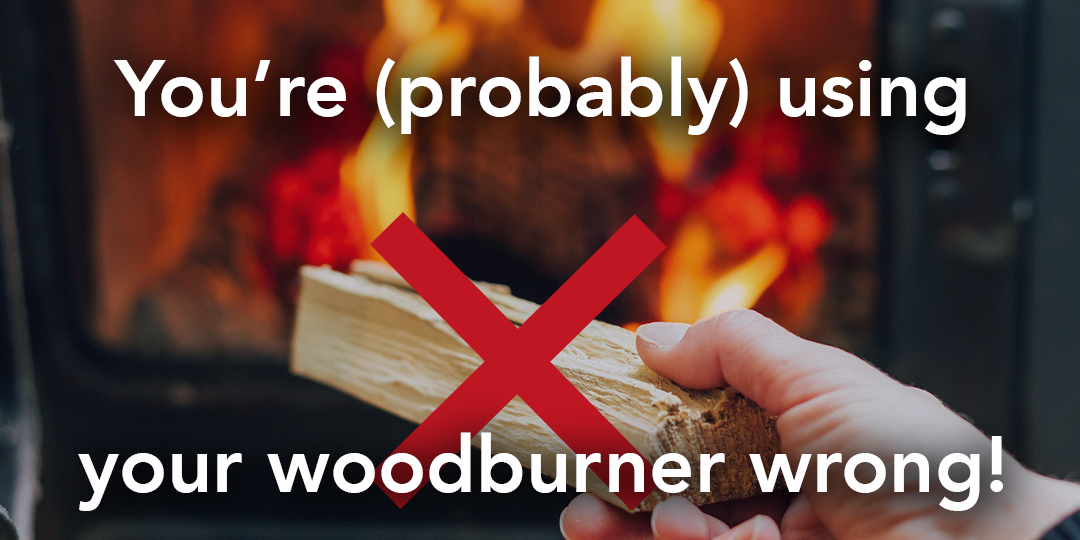Amidst the crackling of logs and the cozy warmth of a wood-burning stove, a common myth has nestled its way into the hearts of many fireplace enthusiasts: the belief that burning pine wood is a cardinal sin in the world of wood heating. For years, we’ve been cautioned against igniting fragrant pine logs due to warnings of creosote/tar buildup, chimney fires, and a myriad of other potential disasters. But is this warning rooted in fact or mere fireplace folklore?
When you burn wood, around 80% of the heat energy stored in the wood comes from the wood gasses/smoke, known as volatile hydrocarbons. This includes all the tars, creosote and resins in the wood and when you see flames coming off the wood, it is these gasses you can see burning. If the fire is not burning hot enough, these fuel vapours are still given off from the wood, but rather than combusting and releasing the heat energy stored inside them, they instead escape into the chimney, where they cool and condense as creosote, clinging to the walls of the chimney and inevitably ‘tarring up’ the flue.
Pine, just like any other wood has saps and resins aplenty hidden in its fibrous trunk. The only real differences between a softwood and hardwood, at least for wood burning purposes, are the densities of said woods and the percentage these compounds make-up of the wood structure. Oak and Ash too have these same saps and resins, it is merely the concentration of these compounds that changes.
So why does Pine retain such a bad rep when it comes to choosing the best firewood? Well, many stories have been passed down through generations of remarkable chimney fires sparked from the ‘pop’ of a pine log and a stray ember flying up the flue and setting the chimney ablaze. Indeed, it is the sappy nature of these woods that cause conifer trees to spit but it is not the fault of the wood itself that the chimney was primed to go up in flames.
Many of the misconceptions of Pine and other softwoods comes from a time before the prevalence of the wood stove. Old large open fireplaces retain a maximum efficiency of around 15%, meaning a good deal of these volatile gasses were not able to ‘burn off’ before they escaped up the chimney as vapours. With Pine having higher concentrations of resins to cool and condense in the chimney, it is clear to see why Pine was seen as a wood which would ‘tar up’ the chimney. Oak and other hard woods would too lead to the same issue but Pine was certainly the fastest route there. Combine this with the act of constant ‘spitting’ from the soft wood and the perfectly tarred up chimneys, with no baffle plate to protect the flammables in the flue, it is easy to understand how a chimney could catch alite and why Pine obtained the reputation it retains today.
Fast forward to today and even the least efficient stoves on the market retain an efficiency of around 60%. All of a sudden, we are able to control and combust these volatile gasses remarkably more efficiently, adding only a fraction of these compounds to the chimney. The additional benefit we have with modern day chimney systems is the introduction of stainless-steel liners. These volatile gasses condense below 125 °C meaning that if we can keep the chimney hot enough to allow these gasses to remain in their gaseous state, they won’t condense on the walls of the chimney and will instead exit the top of the flue, a much easier task for a 150mm stainless steel liner over the large empty void of an old stone chimney.
Now if you choose to burn pine on your wood stove, please make sure that your wood is equally seasoned as the oak or other hard woods you usually burn. Wood fuel should never go anywhere near a stove if it retains a moisture content above 20% but ideally, the closer to 10% you can get, the more efficiency you can expect from your wood. Use a moisture meter testing a freshly split edge to check this. Burning wet wood is another equally rapid way to induce tar into your chimney. It is not the moisture itself that causes the tar but any humidity must first be evaporated and sent out the chimney which steals the heat from the system and often drops the flue gas temperature below that ever so important 125°C point we discussed earlier.
So why choose to burn pine? Well, there are some advantages. Firstly, it is often readily available and very affordable. For those who cut and season their own wood, Pine will season much faster than a lot of other wood varietals. As softwoods are less dense than their hardwood counterparts, they ignite much easier and are perfect for use as kindling or on more mild nights where the intense heat of a dense oak log may be a little over-kill. Not to mention that sappy woods like pine give off a lovely aroma which is a lovely benefit to an ambient evening in front of the flames.
Don’t just take my word for it. Burning soft woods is very common practice up in Scandinavia who are of course incredibly competent at burning wood. With an abundance of Pine and other softwoods available to them, it is common practice that softwoods will be burned in the Autumn and Spring and the denser seasoned hard woods won’t make their way into the firebox until the colder, harsher winter months. You can find out all about this and much more information on wood splitting, storing and burning in the ‘wood burning bible’, Lars Mytting’s Norwegian wood.
Ultimately for most of us here in France, with good, well-seasoned oak firewood available to us at very good prices, the advantages of burning pine and other softwoods are not quite as appealing. With each log having a lower heat output, you will need to stack a larger amount of wood for a much lower amount of heat. The less dense wood will of course burn a lot faster, requiring you to refuel your stove more often. On top of this, Pine tends to produce much more ash than other hard woods, requiring more work to empty your ash pan and keep on top of your stove maintenance.
So, to summarise; Yes, you can burn pine on your wood stove if you would like to. The advantages of doing so are drastically reduced for where we live in Rural France but if following correct burning practices, it will not lead to a build-up of tar in your liner. Make sure your wood is well seasoned and below 20% moisture content and that your fire burns nice and hot (You can use a stovepipe thermometer to check the flue gas temperature of your chimney). Consider mixing your softwoods with your hardwoods to prolong the burn time and heat output and of course, remember to get your chimney swept and checked by a professional chimney sweep regularly.
So, “Can I burn pine and other softwoods in my woodburner?”. Yes – Myth busted!





